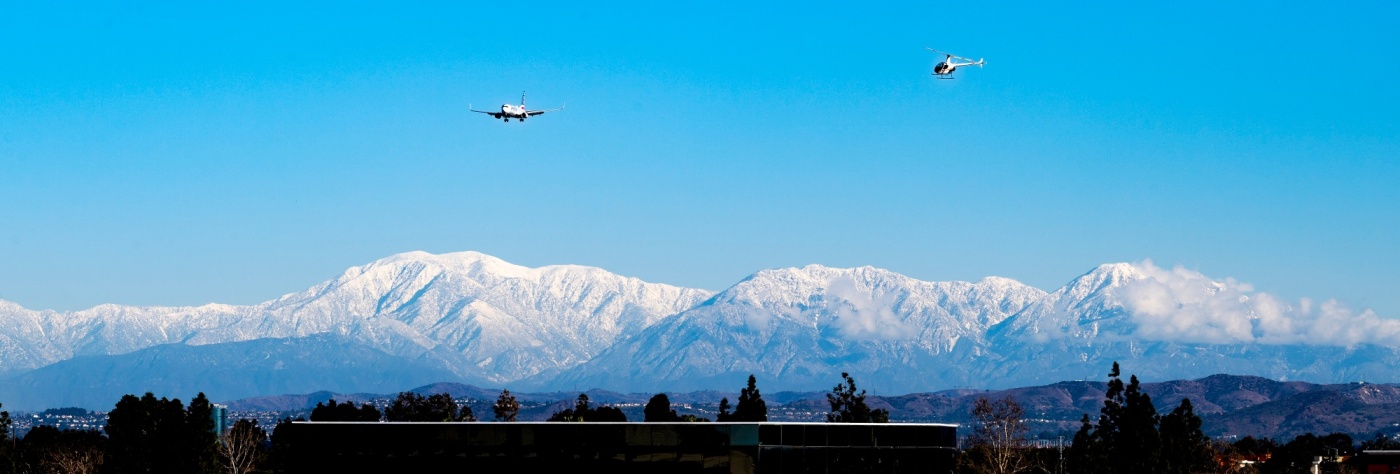While federal aviation rules don’t allow airports to dictate when or how planes take off and land, John Wayne Airport officials are hoping a new education effort will help reduce noise from private aircraft.
The voluntary “Fly Friendly” program, announced this week by Orange County officials, is “designed to minimize noise and environmental impacts from general aviation or private use jet aircraft,” JWA Director Charlene Reynolds said at a media event.
Commercial flights at John Wayne are covered by a unique 1985 legal settlement that sets annual passenger caps and a nighttime curfew, and also limits airport expansion. But the agreement doesn’t cover private planes, whether two-seater Cessnas or Gulfstreams with sleeping quarters, so Fly Friendly “fills in the gap where the settlement agreement doesn’t apply,” said Supervisor Katrina Foley, who announced the program along with Supervisor Lisa Bartlett.
Airport officials are reaching out to businesses and individuals that operate non-commercial aircraft to explain the program and ask them to share the information with pilots.
For jet operators, officials created an instruction card that describes the preferred angle of takeoff and the timing and amounts of acceleration at different altitudes that generate the least noise for neighbors on the ground.
Private pilots of any size plane are also requested to voluntarily observe the curfew for commercial airlines (no takeoffs after 10 p.m. or landings after 11 p.m. daily; arrivals and departures resume at 7 a.m. Monday to Saturday and 8 a.m. on Sundays).
Annually, John Wayne Airport typically sees at least twice as many general aviation operations as it does commercial flights – in 2021, airport statistics show more than 231,000 so-called GA flights, compared with 74,253 commercial operations.
The county has been collecting baseline data on noise and other issues since January and plans to release a report on it next month, Foley said. About 100 different jet operators will be educated about the program and scored on how they’re doing, with extra points if they donate to local conservation groups (soot and other pollution from plane exhaust is another longtime complaint from residents who live in the JWA flight path).
Foley said the county can’t legally offer money as an incentive, but plane operators that score well would be publicly recognized at county meetings, in JWA passenger terminal announcements and with annual awards – which she hopes will encourage OC residents who use private flight services to “pick the ones that are nicer neighbors.”
Some airport watchers are optimistic about Fly Friendly’s prospects. Newport Beach Councilwoman Diane Dixon said the city’s aviation committee proposed a similar concept a few years ago and she’s glad to see movement on it. The city was a party to the lawsuit that ended in the 1985 settlement, and planes leaving JWA fly over the Upper Newport Bay, near the city’s northwestern boundary.
“We are very positive and believe this program will have a positive impact on the quality of life in the surrounding neighborhoods that are in the flight path,” Dixon said.
Costa Mesa resident Phil Chipman, a pilot and aeronautical engineer who attended the media event for Fly Friendly, said that while he thinks the program will help, the private jets are “kind of bothersome, but they’re nothing compared to the commercial (planes).”
During the event Wednesday in the Upper Newport Bay, airline flights were at times taking off from JWA every few minutes, forcing organizers to pause until people could hear them over the engine noise.
Although the airport has no power to regulate those flights, Foley said some relief could be on the way: Reynolds, the airport director, is talking with major airlines about using new quieter planes for JWA operations.





